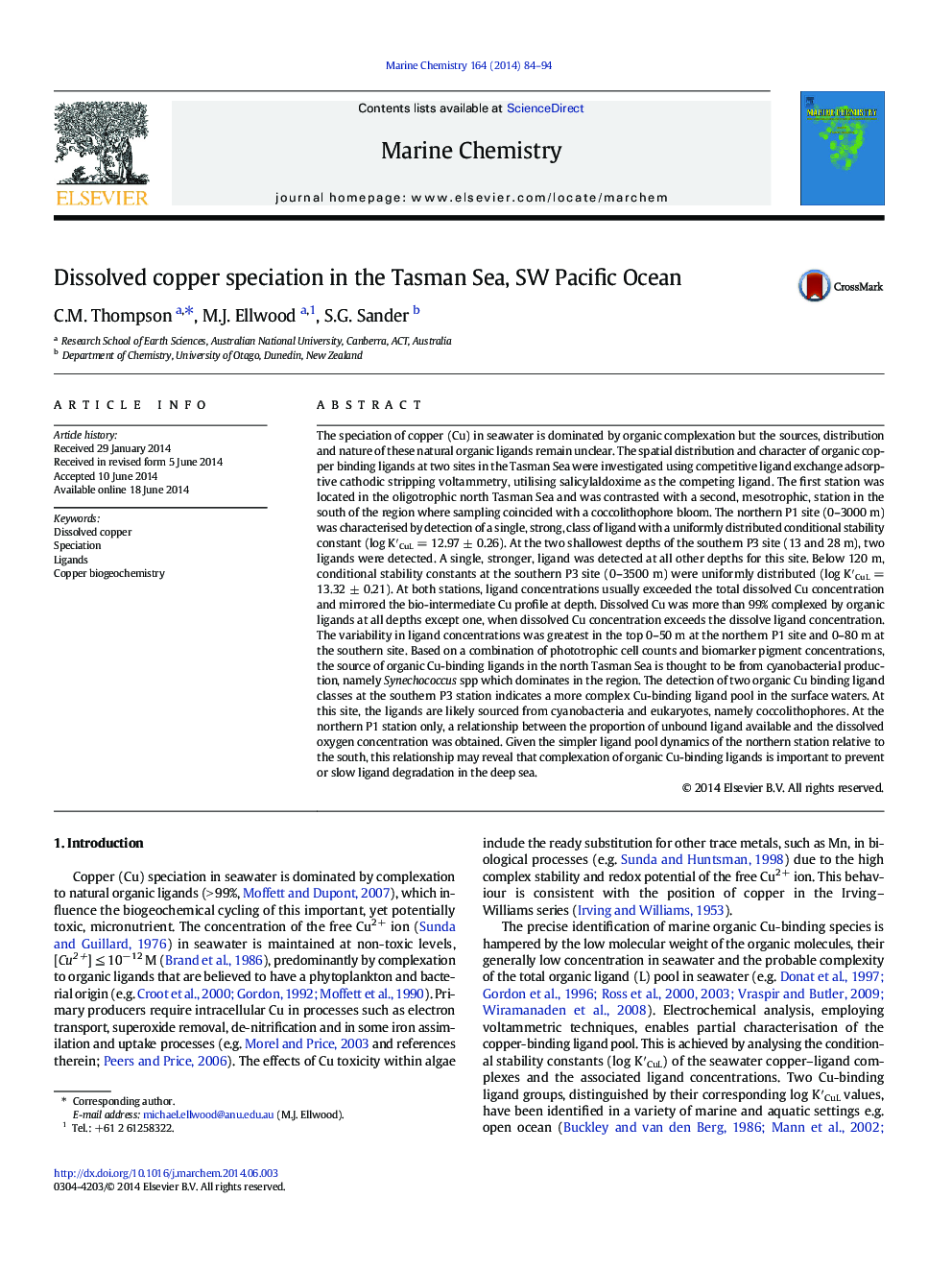| Article ID | Journal | Published Year | Pages | File Type |
|---|---|---|---|---|
| 1261359 | Marine Chemistry | 2014 | 11 Pages |
•We measured and contrasted organic copper speciation at two sites in the Tasman Sea.•A single class of strong ligand was detected to 3000 m at the oligotrophic site.•Two ligands were detected at 13 and 28 m depth at the eutrophic site.•The strong ligand was detected to 3500 m depth at the eutrophic site.•The stability constants of the strong ligands were homogenous with depth.
The speciation of copper (Cu) in seawater is dominated by organic complexation but the sources, distribution and nature of these natural organic ligands remain unclear. The spatial distribution and character of organic copper binding ligands at two sites in the Tasman Sea were investigated using competitive ligand exchange adsorptive cathodic stripping voltammetry, utilising salicylaldoxime as the competing ligand. The first station was located in the oligotrophic north Tasman Sea and was contrasted with a second, mesotrophic, station in the south of the region where sampling coincided with a coccolithophore bloom. The northern P1 site (0–3000 m) was characterised by detection of a single, strong, class of ligand with a uniformly distributed conditional stability constant (log K′CuL = 12.97 ± 0.26). At the two shallowest depths of the southern P3 site (13 and 28 m), two ligands were detected. A single, stronger, ligand was detected at all other depths for this site. Below 120 m, conditional stability constants at the southern P3 site (0–3500 m) were uniformly distributed (log K′CuL = 13.32 ± 0.21). At both stations, ligand concentrations usually exceeded the total dissolved Cu concentration and mirrored the bio-intermediate Cu profile at depth. Dissolved Cu was more than 99% complexed by organic ligands at all depths except one, when dissolved Cu concentration exceeds the dissolve ligand concentration. The variability in ligand concentrations was greatest in the top 0–50 m at the northern P1 site and 0–80 m at the southern site. Based on a combination of phototrophic cell counts and biomarker pigment concentrations, the source of organic Cu-binding ligands in the north Tasman Sea is thought to be from cyanobacterial production, namely Synechococcus spp which dominates in the region. The detection of two organic Cu binding ligand classes at the southern P3 station indicates a more complex Cu-binding ligand pool in the surface waters. At this site, the ligands are likely sourced from cyanobacteria and eukaryotes, namely coccolithophores. At the northern P1 station only, a relationship between the proportion of unbound ligand available and the dissolved oxygen concentration was obtained. Given the simpler ligand pool dynamics of the northern station relative to the south, this relationship may reveal that complexation of organic Cu-binding ligands is important to prevent or slow ligand degradation in the deep sea.
